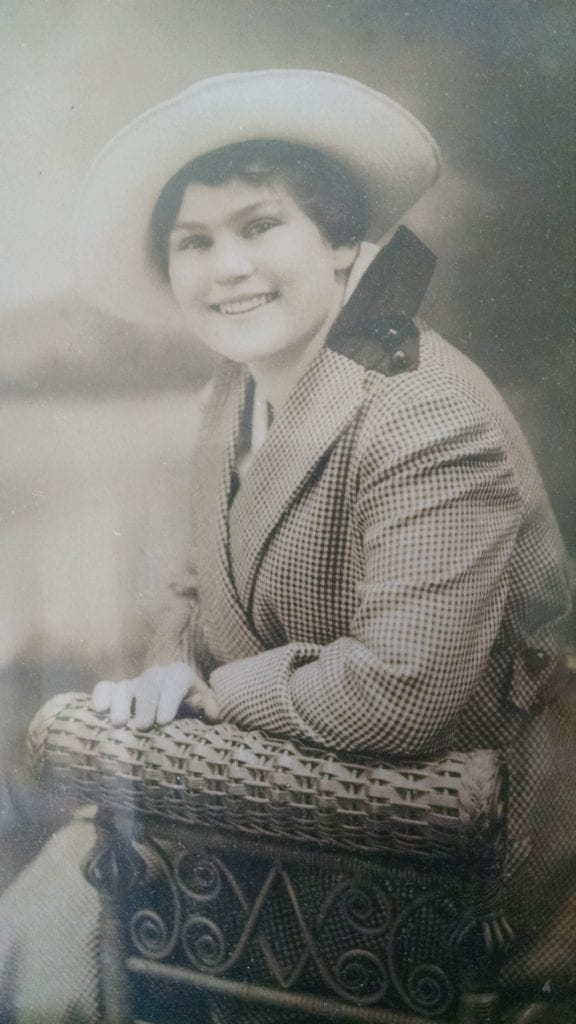
Story and photos by Murray Schneider
You can take the girl out of the country, but not the country out of the girl, or so the saying goes. Such was the case with Amelia Leake, born in 1896 along the James River in Richmond, Virginia.
Through her life, her family affectionately called her Angie.
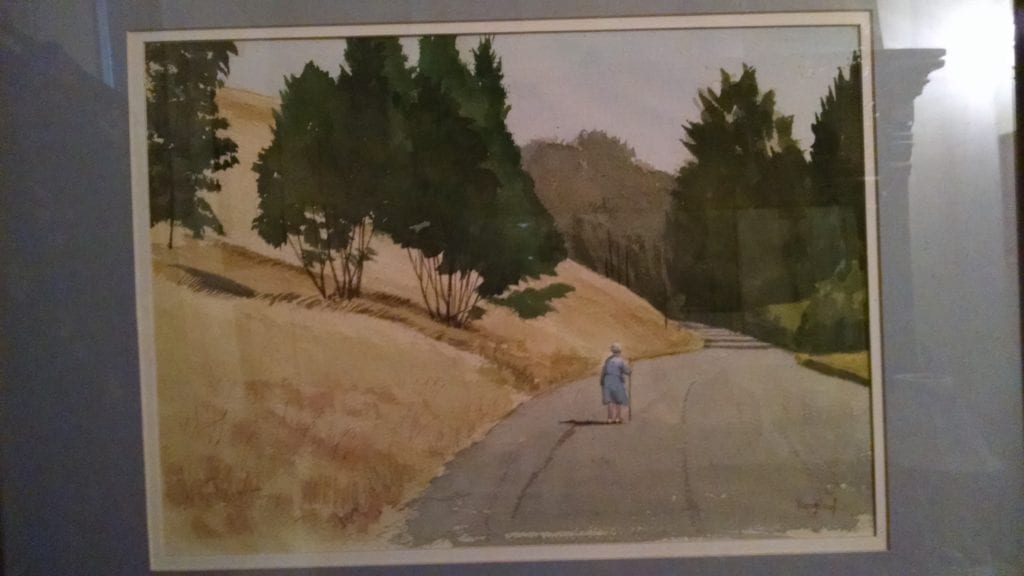
As it would happen, in 1977, a year before her death, Amelia hiked Glen Canyon, which parallels San Francisco’s Islais Creek, a stream of water somewhat less imposing than the James.
“She was in her element,” said Paula Gerhardt, her granddaughter, reminiscing in her apartment next to her mother, Eleanore.
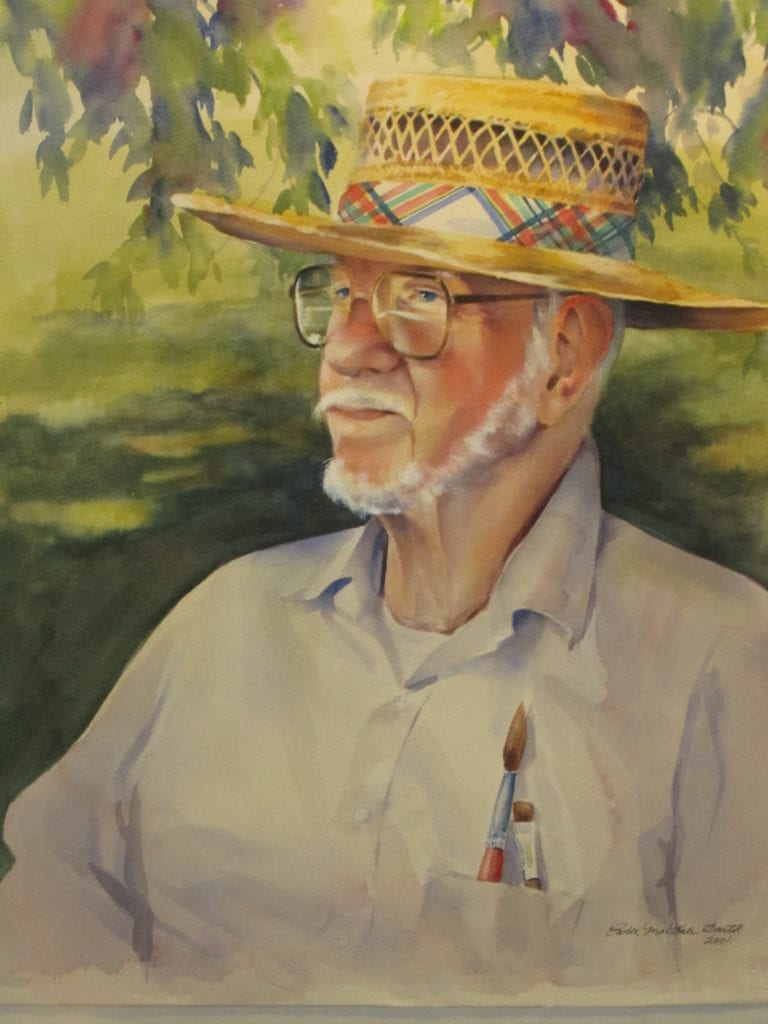
“My mother knew where to go,” said the elder Gerhardt, about Amelia Leake’s walk along Alms Road.
Amelia Leake took the lead, as the three generations of women hiked through the 70-acre canyon.
“Angie wore a blue raincoat,” said Paula, who had only recently discovered Glen Canyon herself. “I’d been living on Leavenworth Street, but for three months I sublet from ACT’s Liz Huddle, who lived on Diamond Street and who was in Ashland that summer.”
Paula worked in the ACT wardrobe department and was Huddle’s ‘dresser.’ For several years afterward Paula ran her own theater company in Utah where she’s produced performances such as “Annie,” “The Wizard of Oz,” and “Spoon River Anthology.”
“My mother picked up a walking stick,” recalled Eleanore Gerhardt, who’d arrived in San Francisco from Stockton for a visit with her 81-year old mother, and where she was employed as an AT&T telephone engineer and drafter.
“I felt I’d come to the country,” said Paula Gerhardt. “I was blown away. I’d attended Arizona State University and loved canyons and deserts and was keen to show my mother and grandmother this natural area.”
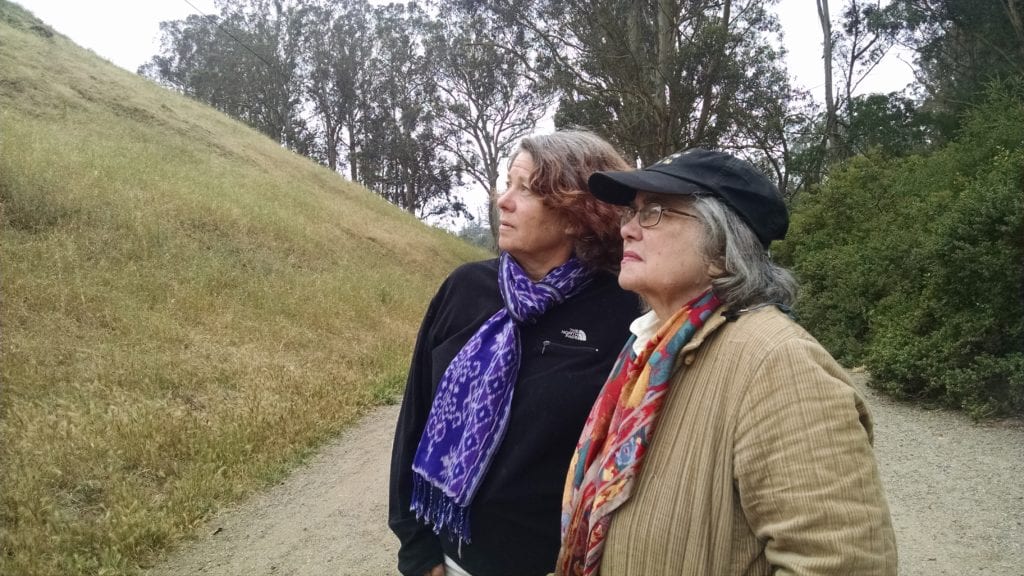
“Mom took off ahead of us,” said Eleanore Gerhardt, about her mother who grew up on a Virginia farm. “She felt really comfortable.”
A photograph recorded this 1970s trek by the trio of women. Just as significantly, William Alan Youngblood, arguably one of the best-kept secrets in twentieth century American art — compartmentalized as simply a regional artist as Howard Frank Mosher and Ivan Doig are ghettoized as only regional novelists — rendered their brief odyssey in one of his watercolors.
Youngblood’s oeuvre, acrylics and mixed media, continues to be sought at auctions, even more so since his death.
“I took the photo of my mother,” said Eleanore, as Amelia Leake strode south, the creek running to her right, the Franciscan chert rock outcroppings looming on her left. “I sent it to my cousin’s husband, Alan, and he painted two versions, one for me and for my sister, Roberta.”
Youngblood captured Amelia Leake, an unfettered woman on a wilderness adventure, her walking stick doubling as a pilgrim’s staff. While a bit stooped, as befitting a woman entering her ninth decade, Youngblood depicts her as soldiering forward, much like a female John Muir edging toward virgin forests.
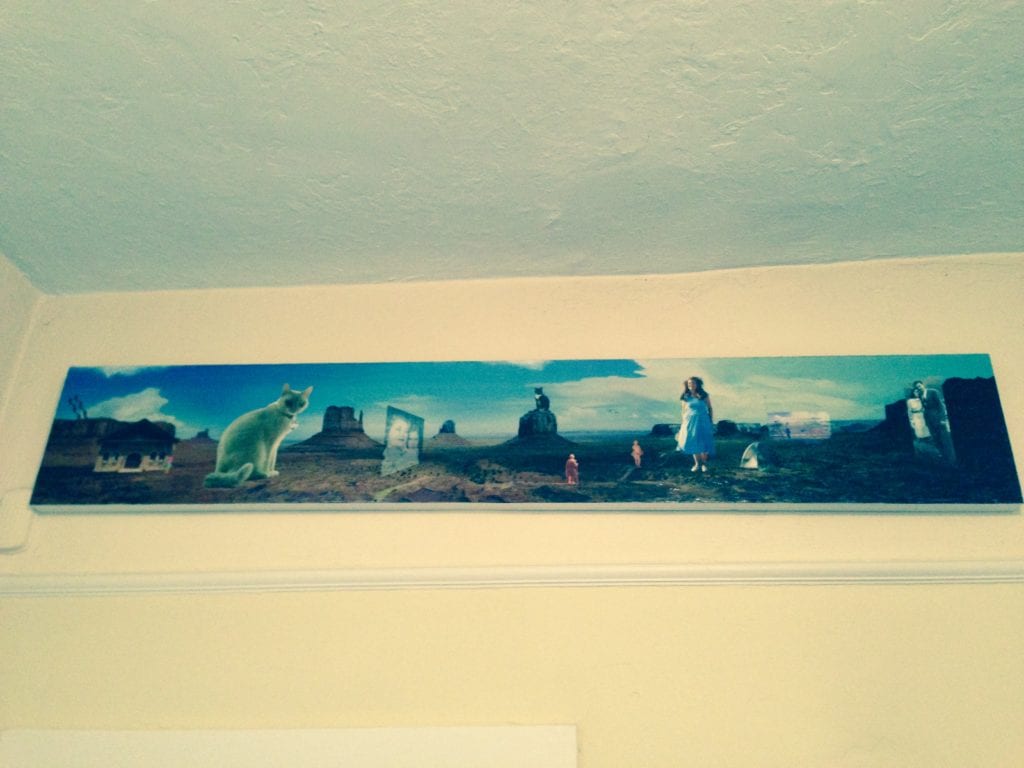
William Alan Youngblood was born in hardscrabble eastern Tennessee in 1915, the Appalachians within shouting distance if he’d yelled long and hard enough. He began drawing during the Great Depression as a child of six and dropped out of school in the seventh grade to help his father, Thomas Youngblood, who taught him how to carpenter.
“Alan was born in Sweetwater, Tennessee, and he must have lived a meager early life where pencils were even hard to find,” said Paula, about the mill town that still manufacturers hosiery. “It was a humble place and not exposed to art galleries.”
“Alan learned to draw on brown lunch bags,” added Eleanore. “Through his entire life he spoke with the slowest southern drawl.”
In his twenties Youngblood worked for the Civilian Conservation Corps, but the powers-at-be soon recognized his talent, confiscating his shovels and pickaxes and replacing them with paintbrushes and palettes of oil paints. He became a sketch artist during the building of the Great Smoky Mountains National Park and subsequently became an architectural draftsman for the National Park Service.
After the Second World War — when he served in the Army Air Corps as a Corporal on le Shima Island in the Okinawa campaign and still found time to draw on washed-up pieces wood or scraps of paper — he worked in advertising, not unlike Edward Hopper. Youngblood eventually became art director of Southern States Cooperative. In 1964 he joined the James River Art League. In 1972 he left advertising to pursue fine art full time, moving to Powhatan, Virginia where he built a home and studio. He devoted the remainder of his life to full time painting.
A lover of fishing and hunting and a skilled wood worker and house framer, Youngblood, who died in 2009 and whose work is mounted in private and corporate collections throughout the Eastern United States and in art galleries in Connecticut, Texas, Virginia and both Carolinas, was an avid gardener.
So was Amelia Leake, the subject of his Glen Park watercolor.
“Mother loved to garden, even in Philadelphia where I grew up,” said Eleanore Gerhardt. “We lived in narrow row house with hardly any backyard, but she always found a patch of soil to plant flowers.”
“On her walk in the canyon she could identify oaks, pines and redwood trees, but also many California native plants,” continued Eleanore. “My father treated us to what he called Sunday ‘mystery history tours,’ which often took us to Wissahickon Valley Park that had seven-mile long Wissahickon Creek.”
Eleanore Gerhardt continued: “I think this is what my mom remembered when she walked in Glen Canyon that afternoon, because Wissahickon Park, for her as a young woman, was wild, uncultivated and natural.”
“The connection to forests, glens and groves of trees goes deeper,” said Paula Gerhardt. “My grandmother’s maiden name was Jones. She was Welsh, and I believe she had an archetypal reverence for the outdoors beyond growing up in her rural Virginia setting.”
“Alan’s painting is precious because he’s saying while we may no longer live in the country, what remains is our shared and collective memory of it, which is sacred and a pathway along our journey.”
“When the three of us walked in the canyon that afternoon I felt a bond I’d never experienced before,” continued Paula Gerhardt. “There’s a Welsh word, hyraith, that means a feeling of homesickness for a place you’ve never seen. That is what I felt on our walk.”
“My father had an appreciation for history,” added Eleanore, “and wanted us to know where it had all started.”
While it didn’t start in the City of Brotherly Love for Amelia Leake, it continued for her when she married Robert Leake.
“My mother worked as an laundress and my father as a barber,” said Eleanore. “Before my mother went to work each day, she’d leave us a list of chores to do.”
While men such as William Alan Youngblood went off to fight in the Second World War, women replaced them in home front factories.
“Mother was hired by SKF bearing company,” said Eleanore, about the Swedish manufacturer founded in 1907, which supplied ball bearings, seals and lubrication system to the war effort. “My mother was the motherly type, and SKF made her a ‘counselor’ for the women who fretted about their men overseas or their children left alone while they worked on the assembly lines.”
“After the war, she worked for Wanamaker’s, selling jewelry,” said Paula. “She worked there until she retired.”
“My grandmother was a wonderful seamstress,” said Paula. “She made all my doll clothes, and it was because of her I became interested in theatrical costuming.”
“She was also a great Southern cook, but guarded with her recipes,” Paula added, smiling. “She always shared them with me, though.”
After a 38 years hiatus this spring, the Gerhardt ladies revisited their Glen Canyon idyll.
Whiffs of aromatic eucalyptus scented the air as they walked toward the new box steps scaling the steep-sloped eastern grasslands.
“We got to the owl tree, and my mother noted the planting of drought tolerant shrubs,” said Paula Gerhardt.
Paula Gerhardt has lived in San Francisco since 1976; Eleanore joined her in 1991.
Mounted on her apartment wall is a mixed media mural she commissioned in 2000 by Frank Pietronigro. The photo-shopped acrylic and oil storyboards different stages in Paula’s life: her Tributary Theater in Moab, Utah, her cats, Katze and Essie, and a photo of her and mother. Paula is depicted in a ballerina costume and in a blue dress, both back dropped by Monument Valley. There’s even a theatrical set painted by her partner, Dennis Gardner.
Squeezed into the center of the mural is what stands out, though. The matronly image is tiny, and one has to look carefully not to overlook the subject of William Alan Youngblood’s 1977 watercolor.
Amelia Leake is nearly swallowed by the more dominant images that surround her.
She’s there, though, in Youngblood’s vision of Glen Canyon, her walking stick punctuating Alms Road, her steps sure and steady, and her back straight and strong.
“My mother,” said Eleanore Gerhardt, “always remained a country girl from Virginia.”